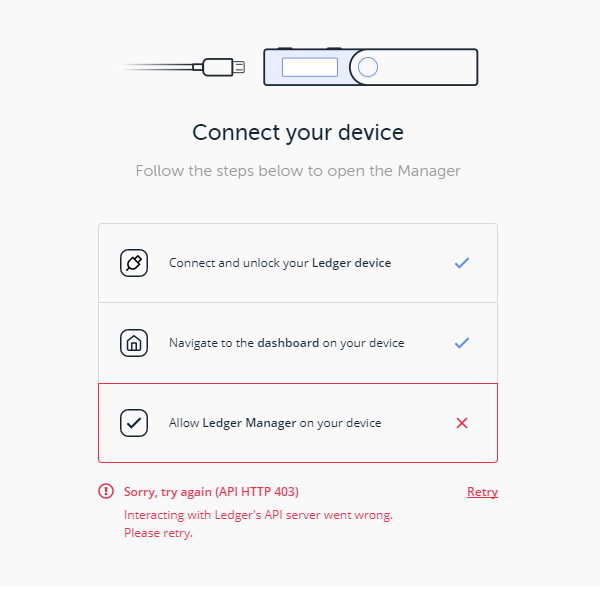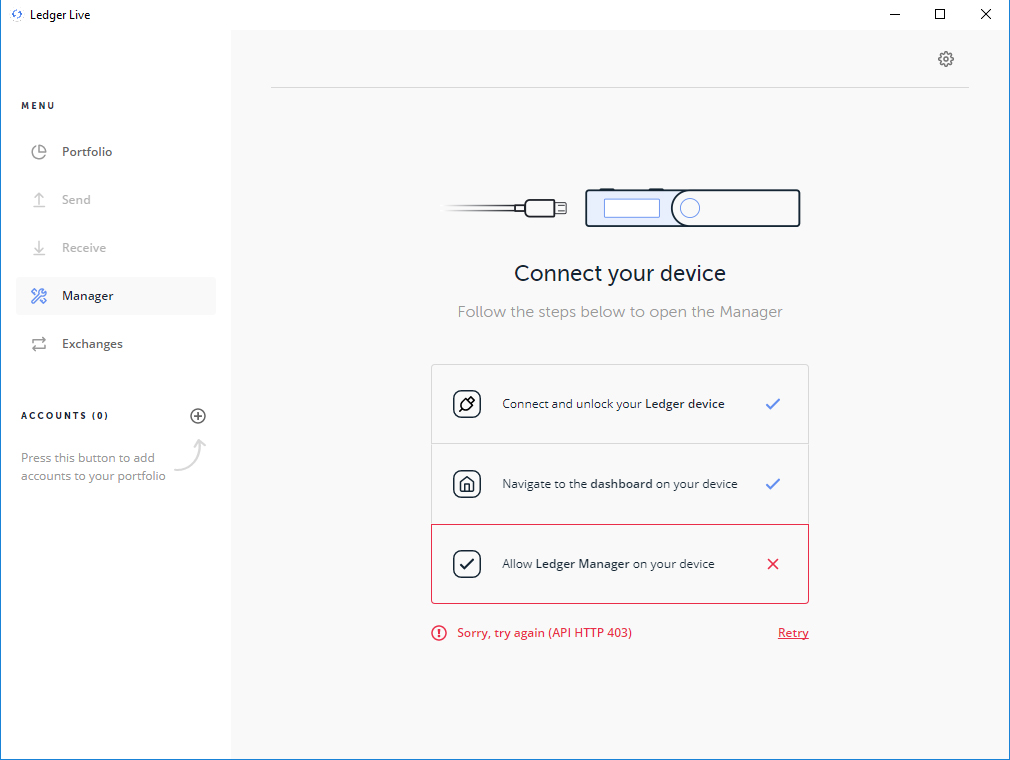These days, one of the most common problems of Ledger Nano hardware wallet customers is the Api http 403 problem when installing Ethereum wallets or other altcoins in Ledger Live, and according to the solutions we have provided to customers during this time, it is better We decided to publish all these solutions in the form of a correct recipe on the Ledger Nano blog so that you can solve this problem as easily as possible. Below you can see the full reasons for this problem and the solutions we provide.
What is Api Http 403 error?
Error 403 is an http status code that is sent to the client or user through a server. This code means that the client or user does not have sufficient permission to access the content placed on the desired server.
For example, you enter the URL of a photo in the browser, and the browser requests the server to display the content of that address to the user, but the server responds to the browser that the client or user has sufficient access to view that photo. does not have .
- Ethereum error
When and why does this situation occur?
The HTTP 403 error can occur due to various reasons, both from the user/client side and the server side. Considering that the servers in question also use a Cloudflare security protocol, it is our assumption that the main reason for this error could be the identification of users as threats, which is typically how this situation is responded to.
First scenario:
The HTTP 403 error can also occur when the server is experiencing problems. In the case of Ethereum, we can look at the server status on a day before this article was written, when many users were receiving this error:
-
In the third row above, you can see that the Ethereum Classic server status was red for a certain period of time. This means that the servers were down and any client or user access to the server was impossible during this time. Overall, the server uptime or accessibility during this period was only 78%.
Therefore, it is logical to say that Ledger Live and also the client sent a correct request to the Ethereum server, but due to the server being down, this status code (403) was returned.
In this scenario, the only solution is to try your request again after one or a few hours. If the server is up, the connection will be established correctly.
Second scenario:
The HTTP 403 error can also be caused by the client or user in some cases. For example, you might be sending a request to a server outside of Iran using an Iranian IP address. The request is valid, and the server even acknowledges it. However, the web server, which could be Apache or Nginx, might deny you access to the requested address for various security reasons. This is because it might not recognize your request as a typical and routine request (client or user), or cookies (small pieces of information previously collected for faster identification) could be the source of the problem.
In such cases, we can try using other software (VPN and other tools) to change our IP address and see if we get a positive result.
First, clear the cache of Ledger Live software
- First, refer to the Setting option or the gear icon.
- Click on the Help tab.
- Find the Clear Cache option.
- Select the Confrim option to open the software again.
If you are unable to access a website or resource due to an HTTP 403 error, you can try using a VPN to change your IP address. A VPN encrypts your traffic and routes it through a server in another location, making it appear as if you are connecting from that location.
This can sometimes help to bypass the HTTP 403 error.
Third scenario:
Each time you connect to an application or website, a session ID is created. The session ID is used to track your activity on the application or website. The server and web server security configurations for each application and website determine the session expiration time, which can be 1 hour, 24 hours, or another value.
If a user or client requests the server with a previous and expired session ID, the server typically responds with a status code like 403.
So we can create our session again so that the server does not identify us with the previous session. In simpler language, exit the Ledger Live program once and re-enter the program to create a new session for you and resubmit your request.
Fourth scenario:
Sometimes this error occurs due to the problem of the third-party application (Ledger Live) which is the interface between the client or the user and the destination server.
According to the investigation that we did in various forums such as GitHub, many Ledger users around the world were also facing this error and sometimes they were able to fix this error by updating Ledger Live to higher versions.
So, one of the other ways you can try is to check your Ledger Live version and if you see a newer version of Ledger Live, update your Ledger Live version.
Bypassing the problem and using a third-party wallet:
If you have not yet installed your cryptocurrency assets on your Ledger Live wallet, you can use a third-party application like MyEtherWallet for Ethereum to completely bypass this issue.
In this way, install this application on your Live Ledger and then save your property on it.
We will try to update this article regularly with more reviews in this case so that we can find a comprehensive and final solution for you 🙂


